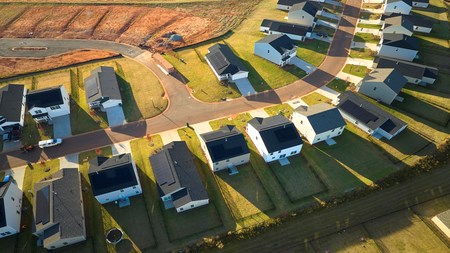Jacques du Toit, Senior Property Economist for the Absa Group looks at market performance over recent years in determining the potential size of the housing market in South Africa.
Against the background of various supporting factors, such as a strongly growing
economy, low inflation and interest rates, the residential property market
performed particularly well during the past few years. During 2000 to 2005,
nominal growth in house prices was about 20% per annum, implying growth of
around 14% per annum in real terms over this period. These growth rates apply to
housing in the middle segment of the market (houses of between 80m² and 400m²,
costing up to R2,2 million), in respect of which mortgage loan applications were
approved by Absa.
Based on the abovementioned housing market performance at a national level since
2000, the potential size of the housing market in South Africa and the various
regions can be determined.
This analysis takes into account average house prices at the lower cut-off point
of the size range for the small (80m²), medium (140m²) and large (220m²)
categories of housing, average annual household income, and the number of
households in each region that can afford to buy a house under certain
assumptions.
The potential size of the housing market
In an attempt to determine the potential size of the housing market at different
levels, the average price of residential properties at the bottom end of each of
the small, medium and large size categories is taken (determined according to
the lower cut-off point in terms of the size range of houses in each category).
After which the minimum gross income is calculated that a household in each
region should earn to qualify for a 100% mortgage on a residential property, of
which the monthly repayment does not exceed 30% of the gross monthly income.
From these calculations, the number of households per size cut-off that are
above the minimum annual qualifying income in each region is determined. This
number, or percentage, of households is regarded as the potential size of the
housing market in each region.
Based on this analysis, 1 792 994 households in South Africa (or 14,4% of the
total number of 12 445 791) were able to afford a residential property of 80m²+
in 2004, taking into account the abovementioned assumptions. In 2004, the
potential market size for houses of 140m²+ was 1 296 519 households, or 10,4% of
the national total, whereas the potential market size for houses of 220m²+ was 1
035 692 households, or 8,3% of the national total in 2004.
The relatively low percentage of households that were able to afford a house at
the abovementioned size limits in 2004, was the result of a skewed distribution
of income in the country. Just more than 8 million households in South Africa
(64,4% of the total) earned an income of up to R54 000 per annum in 2004; about
2,4 million households (19,5% of the total) earned an income of between R54 000
and R132 000 per annum in 2004; around 1,3 million households (10,5% of the
total) earned an income of between R132 000 and R360 000 per annum in 2004; and
about 700 000 households (5,6% of the total) earned an income of R360 000+ per
annum in 2004.
In each of the three categories of housing, Gauteng was the province where the
largest percentage of households could afford to buy a house of the
abovementioned sizes last year. This was the result of the fact that Gauteng was
the province that had the highest level of income per household in 2004.
The Eastern Cape was the province where the smallest percentage of households
could afford to buy a house in any of the three categories in 2004, mainly
because this province had some of the lowest levels of income per household last
year.
In the case of the major metropolitan areas in South Africa, Johannesburg North
and West were the areas where the highest percentage of households in all three
categories were able to afford to buy a house last year, followed by Pretoria.
Cape Town emerged as the metropolitan area in the country where the smallest
proportion of households could afford to buy a house of 80m²+, 140m²+ or 220m²+
in 2004. This can most probably be ascribed to house prices being, on average,
relatively high in the Cape Town metropolitan area, whereas income levels were
lower compared with some other metropolitan areas in the country ([click
here to view supporting figures](https://www.privateproperty.co.za/news/images/200605jdt/potentialsizeofthehousingmarket_2004.pdf)).
Conclusion
House prices have showed relatively strong growth in all the provinces and
metropolitan regions over the past few years, but diversities in terms of growth
in house prices and, especially, the level of and growth in household income
during this period create a different impression of the state of the property
market in the various the regions.
The potential size of the housing market in South Africa (as indicated by the
number and percentage of households in a position to afford a house of 80m²+ in
the so-called middle segment of the market) can be regarded as relatively small.
This was the result of a much skewed distribution of household income in the
country, implying that a large percentage of households earned relatively low
levels of income.



